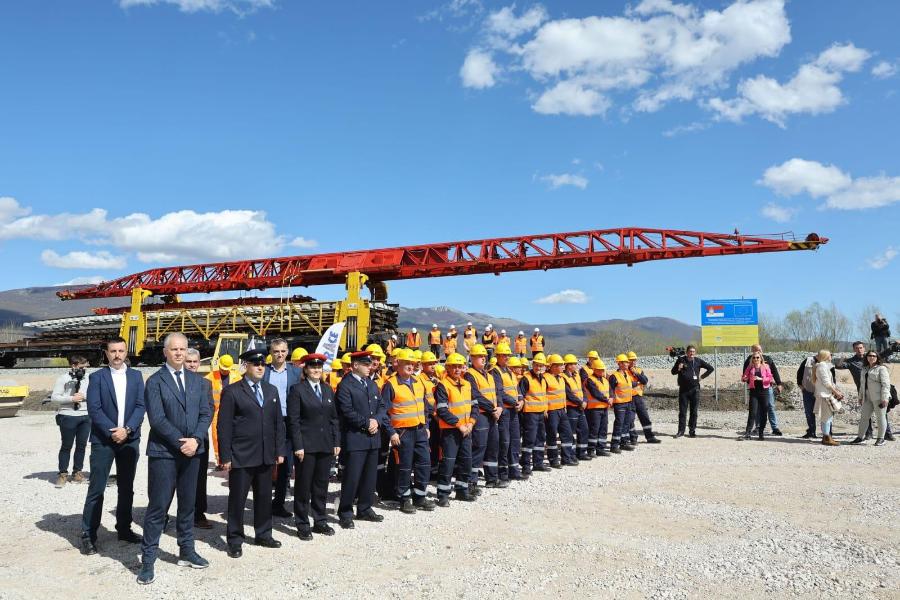
Construction work has begun on the Niš-Dimitrovgrad railway section near the Serbian city of Pirot. The project involves the reconstruction and modernisation of an existing unelectrified single-track railway line from Sićevo to Dimitrovgrad and the construction of the northern rail bypass around the city of Niš, as well as electrification and signalling work on both stretches. As part of the EU Economic and Investment Plan, the overall modernisation of up to 104 km of railway lines will result in shorter journey times and improved safety and regional connectivity, while enabling a gradual shift to more environmentally friendly transportation options.
The launch event was attended by the Serbian President Aleksandar Vučić, EU Ambassador to Serbia Emanuele Giofre, ministers in charge and repesentatives of EIB Global, the arm of the European Investment Bank (EIB) for financing activities outside the European Union.
The EU financial package for this project consists of over €108 million in grants channelled via the Western Balkans Investment Framework and a €134 million EIB loan. The project will also benefit from a €3.7 million technical assistance grant for preparation, and a €1.5 million grant under the EU Instrument for Pre-accession Assistance (IPA) to design and build the bypass around the city of Niš. The EIB JASPERS advisory program, co-financed by the European Commission, provided technical assistance for the project preparation, with a view to securing blended financing through grants and loan.
This railway section is part of the Pan-European Railway Corridor X (Xc branch) through Serbia and is currently the only part of the corridor still unelectrified, with traffic relying on diesel traction. Its electrification will provide a faster, greener and safer railway connection within the country and further on into Bulgaria. Improved infrastructure will also make it possible to increase speeds from the current average of 50 km/h to up to 120 km/h and positively impact travelling habits by increasing the annual number of passengers from around 170 000 to some 550 000, as well as total freight transport from 3.2 million to around 6.2 million tonnes a year.
Projects in the Serbian transport sector funded by the European Union and the EIB aim to improve connectivity and economic integration within the region and the EU. They have made a significant contribution to railway reform, the introduction of safer and more modern road transport infrastructure, and improved navigability on the country’s inland waterways.

©EIB
Download original

©EIB
Download original

©EIB
Download original

©EIB
Download original

©EIB
Download original